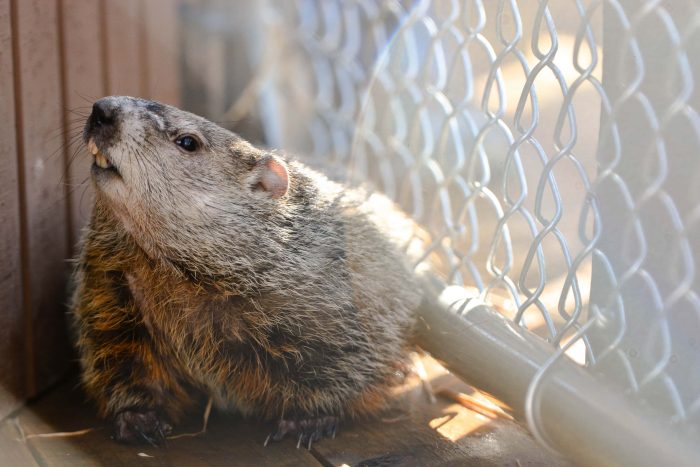You might know French Creek Freddie as West Virginia’s most popular weather-predicting groundhog, but do you know the story of how Freddie started forecasting or how he got his name? Get ready for Groundhog Day celebration at the West Virginia State Wildlife Center on Feb. 2 by checking out these interesting facts about Freddie.
The First Groundhog Day Predictions Were Made By…Badgers
The origins of Groundhog Day can be traced back to Candlemas Day, the traditional conclusion to the Christmas-Epiphany season when clergy would bless and distribute candles. Due to Candlemas occurring at the beginning of February, many people used the holiday to give predictions on the arrival of spring. The Germans added to the tradition by giving the weather predicting duties to the badger. They believed that if the sun made an appearance on Candlemas Day, the badger would cast a shadow and that six more weeks of bad weather would follow. It wasn’t until German settlers came to America that the groundhog became the weather-predicting animal of choice.
Groundhog Day Celebrations In America Started In Pennsylvania
The modern Groundhog Day celebration was started in the 1800s by German farmers living in Pennsylvania, not far from where Freddie’s cousin, Punxsutawney Phil, makes his own prediction each year.
West Virginia’s Groundhog Day Started In 1978
French Creek Freddie didn’t come onto the scene until more than a century later. In 1978, Freddie’s weather-predicting career got its start when former West Virginia State Wildlife Center Superintendent Bill Vanscoy responded to a reporter on Groundhog Day if there was a groundhog on site and if it had seen its shadow.
“I don’t remember what I told him, but it was whatever was appropriate to the weather we were having. Anyway, he asked me what the groundhog’s name was. I don’t know what possessed me to do it but I skipped the usual lecture on why we don’t name animals and said his name was French Creek Freddie”.
“It went out on The Associated Press wire and soon we were getting calls from all over the county. Every year now, people from newspapers and TV stations come out on Groundhog Day and we kick a groundhog out of its den for the cameras. Its harmless fun and it comes at time of the year when people need some cheering up.”
Former West Virginia State Wildlife Center Superintendent Bill Vanscoy, quoted in an article written at the time of his retirement in 2001
French Creek Freddie’s Predictions Are 50-50
In the past 40 years, Freddie’s forecasts have an accuracy rate of about 50 percent. On Groundhog Day 2021, the weather was cold, cloudy and snowy. So, when Freddie emerged from his den he did not see his shadow. Freddie predicted an early spring and he was proven correct in the following weeks. While the average daily high in February 2021 was 36 degrees, the temperature really warmed up in March, with an average daily high of 58 degrees and six days above 70 degrees with no measurable snow.
Freddie also has the help of the National Weather Service, which has an official weather observation station at the West Virginia State Wildlife Center. The NWS has high tech instruments to measure rain or snow, and temperature recordings in the area, which is recorded and submitted daily by wildlife center staff.
Fun Facts About Groundhogs
Groundhogs, also known as woodchucks or whistle-pigs, are the largest animal in the squirrel family. They whistle when alarmed and in the spring when they begin courting. Groundhogs have have short ears, a short tail and short legs, but are surprisingly quick. And their jaws are exceptionally strong. Their teeth never stop growing. Groundhogs eat grass, berries, vegetables, grasshoppers, insects and snails.
Groundhogs are one of the few animals that truly hibernate, a kind of deep sleep or coma-like state where an animal’s body temperature drops to a few degrees above freezing and their heart and breathing nearly stops.
Groundhogs are excellent swimmers, tree climbers and burrowers. They can move more than 700 pounds of dirt when digging a burrow or den, which is used for sleeping, hibernating and caring for cubs. Young groundhogs are usually born in mid-April or May. By July they can go out on their own. The size of the typical groundhog litter is four to nine.
You Can Visit French Creek Freddie Anytime Of Year
The West Virginia Wildlife Center in Upshur County is home to French Creek Freddie and nearly 30 different species of West Virginia mammals, birds and reptiles. Visiting this 338-acre facility is perfect for a fun and educational family outing. Click here for directions and hours of operation.

